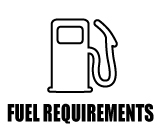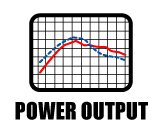Map Notes for WM Mk7 Golf R
Supported Vehicles:
- World Market 2014 - 2018 Volkswagen Golf R
- MK7 Golf R ROM ID:
- CJXC_5G0906259E
- CJXC_5G0906259F
- CJXC_5G0906259G
- CJXC_5G0906259H
- CJXC_5G0906259J
- CJXC_8V0906259A
- CJXC_8V0906259J
- CXDA_8V0906259N
- CXDA_8V0906259R
Map Revision:
- Vehicle Anti-Theft Mode v101
- Stage0 v101
- Valet Mode v101
- Stage1 95 RON v101
- Stage1 98 RON v101
Map Availability:
- Download from the COBB Tuning Volkswagen Golf R OTS Map Database.
Required Accessport Firmware:
Drivetrain Considerations
Running a stage 2 map on a vehicle without an upgraded clutch or DSG tune may cause slipping or damage to your clutch/clutch pack.
COBB Custom ECU Features
COBB Custom Features: Volkswagen MQB Platforms
Stage1 98 RON
Stage 1 95 RON
High Altitude:
A quick note for those of you that live at higher altitudes: it is common for turbocharged cars at higher altitudes to run less boost pressure due to lower air pressure and air density. Your turbocharger has to work harder to compress a less dense air mass compared to the same turbocharger at sea level. This must be factored in when determining if your turbocharger is running the proper amount of boost pressure and not being pushed beyond its efficiency range.
Example: If you live in Denver at 5280 ft. and are trying to run a peak boost pressure of 15 psi, your turbocharger has to work the equivalent of making ~17.5 psi at sea level.
There are barometric compensations within the factory ECU that lower boost targets as you climb in altitude in an effort to keep the turbocharger in its optimal range. The COBB performance maps utilize these compensations and therefore, it is perfectly normal for the final boost / load value to be lower than what is listed for your map.
Revision Notes:
OTS maps with LC, FFS and TC adjustments available on the Accessport:
The values in the adjustments menu on the AP are temporary and will not persist after an extended key off time (apporx. 5-30 minutes). This is normal and the default values will be loaded the next time the feature is used.
v101 –
- No calibration changes.
- This map has been updated to our Green Speed standard to ensure compliance with EPA and CARB regulations. This map eliminates unnecessary DTC suppression to ensure full environmental compliance.
v100 –
- Initial release, revised ignition timing, primary fueling and boost levels for performance and safety.
Related content
Copyright 2025 © COBB Tuning Products LLC. All Rights Reserved. | www.cobbtuning.com




